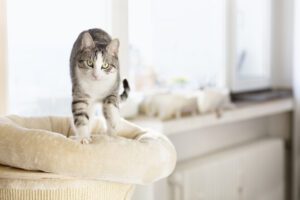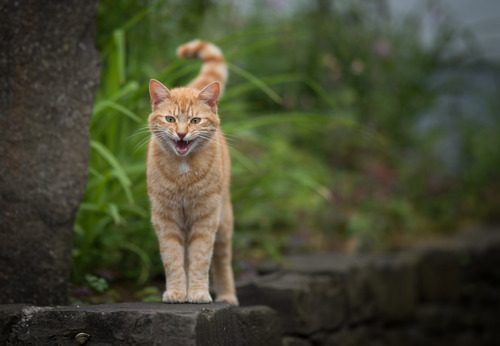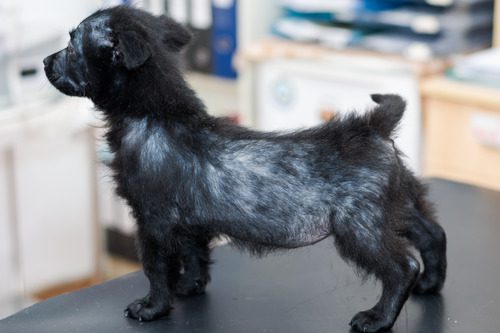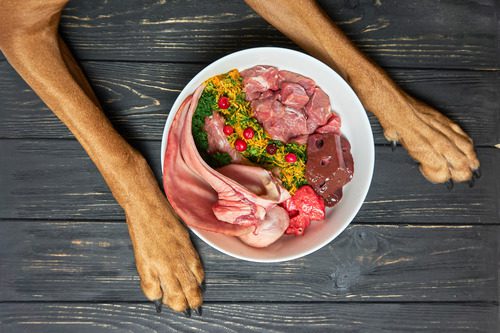The Science Behind Cat Kneading: Understanding Your Pet’s Instincts
Cat owners are no strangers to the wonderful sight of their feline friends regularly kneading their paws on soft surfaces. This unusual behavior, known as cat kneading, has fascinated pet lovers for many years. While it may appear random or perplexing, there is an intriguing scientific elucidation behind this instinctive behavior. By digging into the evolutionary background and surveying their physiology, we can gain a deeper understanding of why cats engage in this endearing action.
Evolutionary Origins
To understand the history of cat kneading, we must first consider the wild forebears of our tamed felines. In the wild, cats would create nests or sleeping areas by patting down foliage or grass. These recurring movements helped to soften the ground, making it comfier for resting or giving birth. Over time, this behavior became ingrained in their instincts, even in the absence of such practical needs.
The Physiology of Cat Kneading
When a cat kneads, it performs a set of actions that involve the stretching and retraction of its front paws. The rhythmic motion is frequently accompanied by mild pushing and pulling action against the selected surface. To better understand this behavior, we can explore the physiological mechanisms behind it.

Instincts and Behaviors
Cats knead for a variety of reasons. Some of the most significant reasons are listed below.
A Relic from Kittenhood
Cat kneading is believed to be an innate behavior that branches from their early days as nursing kittens. When kittens nurse, they naturally rub their mother’s mammary glands to accelerate milk flow. This movement elicits a consoling response and forages a strong connection between mother and offspring. As cats grow into adults, the kneading behavior often persists, acting as a reminder of their kittenhood and the secure feeling they associated with nursing.
Territory Marking and Scent Communication
According to different hypotheses, cats use kneading to mark their territory and communicate through smell signals. Cats have scent glands located in the smooth pads of their paws, and by kneading, they release pheromones onto the surface they’re pressing against. These pheromones function as an aroma marker, letting other cats know that the area is claimed and helping create a sense of familiarity and security for the kneading cat.
Nurturing and Comforting Behavior
Kneading is often observed in cats when they feel satisfied, cozy, or in need of comfort. Many cats knead soft things, such as blankets, cushions, or even their owners’ laps. Kneading helps cats release endorphins, which promote feelings of relaxation and well-being, making it a self-soothing behavior that brings them relaxation and security.
Inherited Reflexes
Kneading behavior in cats is a result of reflexes that have been inherited through generations of feline ancestors. While the precise genetic foundation for kneading is still unknown, it is believed to be rooted in the evolutionary history of wild cat species. Domesticated cats, despite their descent from wild cats, still exhibit many of these instinctual behaviors.
Remnants of Kittenhood
As mentioned earlier, kneading is a behavior that is formed during a cat’s early stages of life. Even as adult cats, the action may serve as a form of nostalgic behavior, reminding them of their carefree kitten days. It can be seen as a way for them to connect with their past and maintain a sense of comfort and security.
Stretching and Exercise
Kneading also gives cats a chance to stretch their muscles and maintain agility. The rhythmic movement engages their shoulder, leg, and back muscles, encouraging good circulation and easing any stiffness. It can also act as a light form of exercise, especially for indoor cats who may have limited opportunities to engage in physical activity.
Grooming Behavior
In some instances, cats may incorporate grooming into their kneading routine. As they flex their claws, they may nibble or gently lick the surface they are kneading. This action mimics their grooming behavior and further adds to their overall sense of relaxation and well-being.
Potential Concerns
While kneading is typically a good behavior for cats, it can cause potential concerns.
Scratching and Skin Irritation
Cats may use their claws during kneading, which can occasionally cause unintended scratches or skin irritation. It’s important to regularly trim your cat’s claws to reduce the menace of scratching.
Allergies and Asthma
If a person is allergic to cats or suffers from asthma exacerbated by allergens, the act of kneading can potentially release dandruff and trigger symptoms. Regular grooming and cleaning of the cat’s living environment can help minimize allergens and reduce the impact on allergic individuals.
Overstimulation or Discomfort
Some cats may become too eager during kneading, using extreme force, or applying their claws more firmly. This can cause discomfort or even agony for the person or surface being kneaded. If your cat’s kneading becomes rough or disruptive, it may be necessary to divert their behavior to a more appropriate surface or employ training methods to discourage the behavior.
Consult a veterinarian
If your cat’s kneading behavior suddenly changes, becomes excessive, or is accompanied by signs of discomfort or pain, it’s advisable to consult with a veterinarian. They can assess your cat’s overall health and behavior to ensure no underlying medical conditions are contributing to the changes in kneading behavior.
Responding to Kneading
Responding to kneading in cats can vary depending on the situation and your cat’s preferences. Here are some general guidelines to consider:
Provide a Suitable Surface
If your cat is kneading on an improper or sensitive surface, such as your lap or furniture, you can reroute their behavior to a more suitable spot. Offer a soft blanket or pillow explicitly intended for kneading. This will protect your lap or furniture while still allowing your cat to engage in the behavior.
Enjoy the Bonding Experience
If your cat likes kneading on your lap, you can decide to allow it to strengthen your relationship. Place a soft blanket or towel on your lap to protect your clothes from any potential kneading-related scratches.
Keep Claws Trimmed
Kneading can sometimes result in accidental scratches, especially if your cat’s claws are sharp. Regularly trimming your cat’s claws can help minimize the chances of accidental injuries during kneading. If you’re unsure how to trim their claws, consult your veterinarian or a professional groomer for guidance.
Provide Alternative Comforting Behaviors
If your cat engages in excessive kneading that becomes unpleasant or bothersome, you can try guiding their behavior towards alternative relaxing activities. Offer a stuffed toy or provide a scratching post with a soft surface that simulates the texture of kneading. This can help satisfy their instinctual need for comfort while protecting your lap or furniture.
Conclusion
Cat kneading is a fascinating behavior that reflects the intricate instincts and evolutionary history of our feline companions. Whether rooted in their early experiences as nursing kittens, territorial marking, muscle stretching, nurturing tendencies, or inherited reflexes, kneading serves multiple purposes for cats. Understanding and appreciating this behavior can deepen the bond between cat owners and their pets. So, the next time your feline friend starts making biscuits, take a moment to observe and cherish this intriguing display of instinctual behavior.
If your cat’s kneading behavior has changed, become excessive, or is accompanied by signs of discomfort or pain, contact Best Friends Veterinary Hospital. Our veterinarians can assess your pet’s behavior and help to come up with solutions. Call us today for more information.
Recent Posts
About Best Friends Veterinary Hospital
Our veterinarians and staff warmly welcome dogs, cats, and a variety of exotic pets as patients here at our animal hospital, and we offer a host of services to give your unique family member a lifetime of excellent care.





